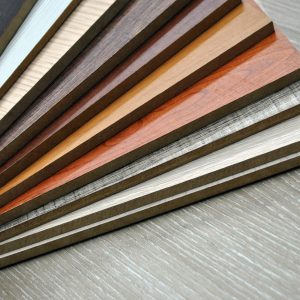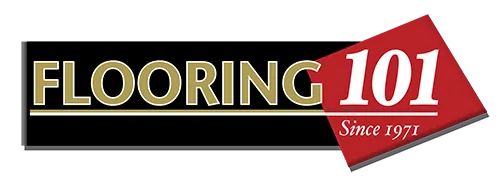Laminate vs. Vinyl Flooring: A Head-to-Head Comparison for California Lifestyles
California homeowners, from the coastal cities of Ventura to the inland valleys of Bakersfield, often seek flooring solutions that are budget-friendly, easy to maintain, and stylish enough to complement the state’s diverse home aesthetics. Two of the most popular and affordable options that consistently meet these criteria are Laminate Flooring and Luxury Vinyl Flooring (LVF).
While they share a similar appearance, their underlying composition, water resistance, and overall performance are vastly different. At Flooring 101, we provide this detailed, head-to-head comparison to help you understand which option is best suited for your specific needs, whether you are remodeling a high-moisture bathroom or updating a high-traffic living room. Our guide breaks down the essential differences between Laminate and Vinyl to help you make the most informed choice for your California lifestyle.

Comparing Laminate vs. Luxury Vinyl Cores
The single most important distinction between these two flooring types lies in their core structure, which dictates their water resistance.
Understanding Laminate Fiberboard Core: Laminate flooring is constructed with a core of High-Density Fiberboard (HDF). This core is made from wood fibers and resins compressed under high pressure:
- Pros: Generally feels warmer and softer underfoot than vinyl, can mimic the texture of real wood very accurately (due to the rigid core), and is highly resistant to scratches and dents (measured by the AC rating).
- Cons: The HDF core is susceptible to water damage. If standing water seeps through the seams, the core can swell, permanently damaging the plank.
- Best Use (Laminate): Living rooms, bedrooms, hallways, or any dry area where budget and durability are key concerns.

Understanding Luxury Vinyl Polymer Core: Luxury Vinyl Flooring (LVF), including LVP (Plank) and LVT (Tile), is constructed with a 100% synthetic polymer core either a Wood Plastic Composite (WPC) or a Stone Plastic Composite (SPC).
- Pros: 100% waterproof, making it ideal for high-moisture areas. Offers better stability in temperature-fluctuating California climates and is often more comfortable underfoot than laminate (especially WPC).
- Cons: Can be more susceptible to scratching or denting if the wear layer is thin, and the aesthetic can sometimes look less authentic than high-end laminate.
- Best Use (Vinyl): Kitchens, bathrooms, laundry rooms, basements, and homes near the coast (like Ventura or Oxnard) where humidity is higher.

Comparing Laminate vs. Luxury Vinyl Water Resistance
For California homes, particularly those near the ocean, water resistance is a top priority due to moisture and humidity.
- Laminate: Is water-resistant on the surface (the wear layer protects from small spills), but is not waterproof once liquid penetrates the seams or edges. Requires immediate cleanup of spills.
- Luxury Vinyl: Is 100% waterproof throughout the plank. It can be submerged without structural damage, making it the clear winner for bathrooms and kitchens. Maintenance is exceptionally easy: regular sweeping and wet mopping are all that is needed.
Comparing Laminate vs. Luxury Vinyl Aesthetics
Both types have come a long way in aesthetic realism, but there are subtle differences in how they feel and look.
- Laminate’s Realism: High-quality laminate uses a rigid core and Embossed-in-Register (EIR) technology to perfectly align the texture with the photographic image, making it incredibly realistic to the touch and eye.
- Vinyl’s Comfort: The WPC core in many vinyl products provides a quieter, softer step than the hard HDF core of laminate, making it more comfortable for standing for long periods in a kitchen. SPC is firmer, offering maximum dent resistance.

Making the Final Choice for Your California Home
The best choice between laminate and vinyl comes down to one primary factor: moisture risk.
- Choose Luxury Vinyl Flooring if: Your space is a bathroom, kitchen, laundry room, or if you live in a high-humidity coastal area. The 100% waterproof core offers worry-free living.
- Choose Laminate Flooring if: Your space is a dry living room or bedroom, and you want the most authentic wood texture and high scratch resistance for the lowest possible cost.
At Flooring 101, our experts will assess your specific room, budget, and lifestyle to guide you to the perfect product for a long-lasting, beautiful result.
Find Your Perfect Floor: Laminate or Luxury Vinyl?
Both laminate and luxury vinyl offer California homeowners affordable, durable, and stylish alternatives to natural materials. While laminate excels in realism and scratch resistance in dry areas, luxury vinyl’s 100% waterproof nature makes it the superior choice for any high-moisture environment, from Simi Valley kitchens to Ventura bathrooms.
Flooring 101 has been providing comprehensive flooring services to Ventura and Santa Barbara Counties for over 50 years. We provide free in-home measurements and estimates, professional installation, and advanced cleaning and maintenance services to make the experience of buying and enjoying your new floors a pleasure.
Ready to determine the best flooring for your home? Visit any of our seven showroom locations to compare the look and feel of high-quality laminate and waterproof vinyl side-by-side. Contact us today to schedule your free in-home consultation, and let our experts help you select and install the perfect floor for your California lifestyle. Our Showroom Locations Include: Oxnard, CA – Ventura, CA – Bakersfield, CA – Goleta, CA – Thousand Oaks, CA – Santa Maria, CA – Simi Valley, CA.


